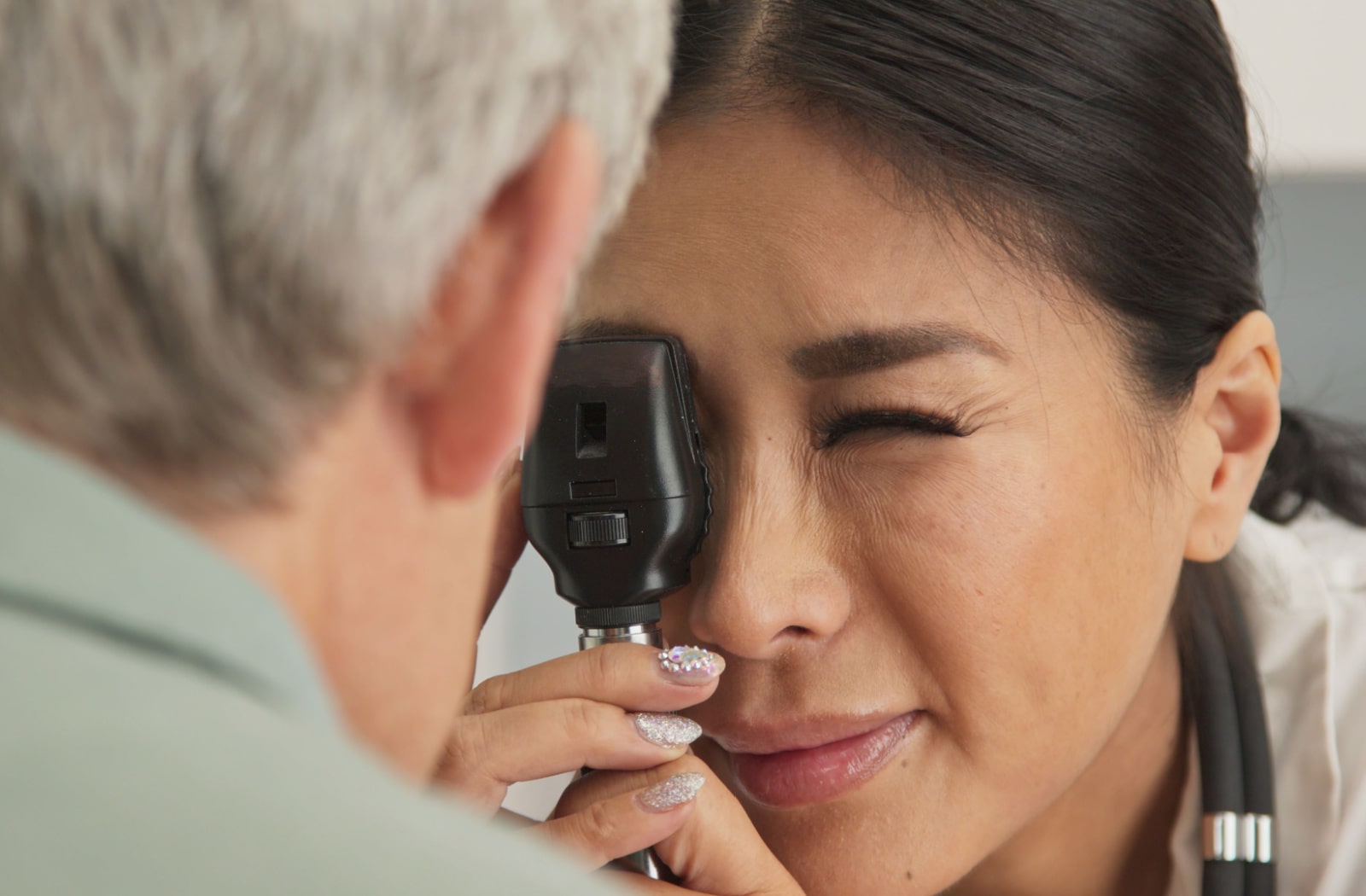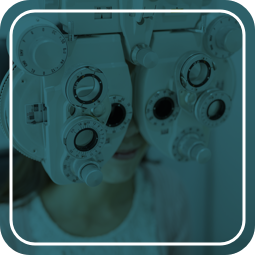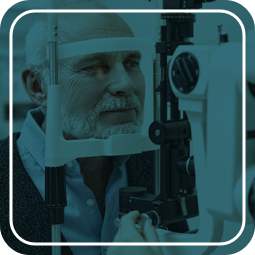Glaucoma is a serious eye condition that can lead to blindness. It affects the optic nerve, which sends information to the brain about what we see. Unfortunately, glaucoma typically has no symptoms until it’s in the advanced stages, which is why this condition is often referred to as the “silent thief of sight.”
However, just because there may be no symptoms, that doesn’t mean there are no signs. Your optometrist has the tools and knowledge to diagnose glaucoma, even in these early stages. This is why regular eye exams are so important, especially as we age.
What Is Glaucoma?
Glaucoma is a group of eye diseases that damage the optic nerve. The optic nerve connects the eye to the brain, and if damaged, it could lead to blindness.
Glaucoma isn’t a single condition with a single cause. Glaucoma comes in different types, and though the most common types involve an increase in fluid pressure inside the eye, referred to as intraocular pressure (IOP), some rarer types can be particularly subtle:
- Open-angle glaucoma: The most common type of glaucoma is open-angle glaucoma, accounting for up to 90% of cases. It occurs when the eye’s drainage canals become gradually blocked, leading to increased IOP and optic nerve damage. Unfortunately, open-angle glaucoma may have no symptoms in its early stages. As the disease progresses, you may experience peripheral vision loss or tunnel vision, but by then, the damage may be irreversible.
- Angle-closure glaucoma: Angle-closure glaucoma occurs when the iris bulges due to blockage of the drainage channels, leading to a sudden spike in IOP. Unlike open-angle glaucoma, it can present suddenly with symptoms like eye pain, headache, nausea, and vomiting. It’s essential to seek immediate treatment for angle-closure glaucoma because the vision loss caused by it can be permanent.
- Secondary glaucoma: Secondary glaucoma results from another eye condition or injury, such as diabetes or cataracts. Certain medications could also increase IOP as a side effect.
- Normal-tension glaucoma: Normal-tension glaucoma occurs even when IOP appears normal. Doctors aren’t sure why some people develop normal-tension glaucoma, though some suspect poor blood flow to the optic nerve could be a cause.
Glaucoma Symptoms
Most people with glaucoma are asymptomatic until the later stages of the disease, which is why regular eye exams are so important. However, you should still keep watch for some early signs of glaucoma, including:
- Blurred vision
- Halos around lights
- Loss of peripheral vision
- Eye pain or redness
- Nausea or vomiting
If you experience any of these symptoms, see your eye doctor right away for a checkup. The earlier an optometrist can diagnose glaucoma, the more effective treatments can be.
Am I at Risk of Glaucoma?
Glaucoma is a complex set of diseases, and while anyone could develop it, certain genetic and environmental factors can increase your risk.
Some of these factors include:
- Age
- Ethnicity
- Family medical history
- Eye injury
- Surgery
- Health conditions such as high blood pressure and diabetes
- Eye tumours
While you may not always be able to prevent glaucoma, you can take some steps that may reduce your risk:
- Eat a healthy diet that‘s rich in fruits and vegetables
- Exercise regularly
- Manage chronic medical conditions such as diabetes and high blood pressure
- Wear protective eyewear when participating in sports or working with machinery
- Visit your optometrist regularly
How Does an Optometrist Detect Glaucoma?
A comprehensive eye exam is an optometrist’s primary tool for diagnosing glaucoma. During this exam, your optometrist measures the pressure inside your eye, examines the optic nerve for signs of damage, and performs visual field testing to assess peripheral vision.
Tonometry
Your IOP is measured with a tonometry test. During the test, your optometrist uses a tonometer, which either quickly touches your eye or puffs air against the front of the eye. Tonometry is usually the initial test for glaucoma, and if your optometrist finds your IOP to be higher than normal, they may recommend more tests to diagnose glaucoma.
Visual Fields Test
Another test that can detect early glaucoma signs is a visual field test. Vision loss from glaucoma typically starts with peripheral vision. During the test, you’ll look into a machine that displays light spots in your field of vision. Every time you see a light spot, you press a button. This test can help your optometrist determine if there are blind spots in your vision and if they’re worsening.
Optical Coherence Tomography
Sometimes the best thing to do is take a look at the damage directly. Optical coherence tomography (OCT) uses light waves to create a detailed cross-section of the retina at the back of your eye. These images can help your optometrist detect signs of glaucoma such as damage to the optic nerve and changes in the thickness of the nerve fibers.
Treatments for Glaucoma
Glaucoma treatment depends on the type of glaucoma and what stage it’s in. But whatever the case, the aim is usually to reduce intraocular pressure and prevent additional harm to your optic nerve.
The first line of treatment for glaucoma typically involves medicated eye drops. These medications work by reducing fluid pressure in the eye and increasing fluid outflow. Eye drops are usually prescribed for use once or twice a day, but always follow your doctor’s recommendations.
In some cases where eye drops aren’t effective, your optometrist might suggest laser treatment or surgery to help fluid drain.
Put the Spotlight on Glaucoma
Optometrists play an important role in diagnosing and managing glaucoma. They can perform comprehensive eye exams, monitor the condition over time, and prescribe treatments when needed.
Don’t let glaucoma sneak up on you. Book your eye exam at Downtown Eye Care & The Contact Lens Department today and let’s support your bright future together.















